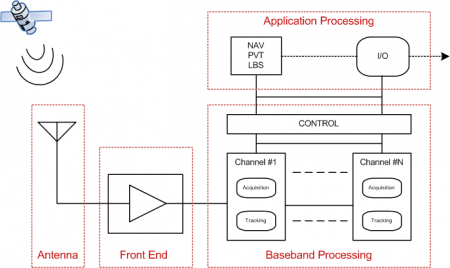If you wish to contribute or participate in the discussions about articles you are invited to contact the Editor
System Design Details: Difference between revisions
Jump to navigation
Jump to search
Rui.Sarnadas (talk | contribs) No edit summary |
Rui.Sarnadas (talk | contribs) No edit summary |
||
| Line 17: | Line 17: | ||
Table 1<ref><i>Kaplan, E.D. et al, "Understanding GPS: Principles and Applications", second edition.</i>.</ref> presents an order of magnitude of the 3-D position/time errors achieved with different types of receivers, both for Standard Positioning Service (SPS) and Precise Positioning Service (PPS) using legacy GPS. Note that this table is valid for GPS only and it is provided here for illustrative purposes<ref>For further information on the accuracy of each of the GNSS, please refer to the applicable sections.</ref>. | Table 1<ref><i>Kaplan, E.D. et al, "Understanding GPS: Principles and Applications", second edition, chapter 7, section 7.7</i>.</ref> presents an order of magnitude of the 3-D position/time errors achieved with different types of receivers, both for Standard Positioning Service (SPS) and Precise Positioning Service (PPS) using legacy GPS. Note that this table is valid for GPS only and it is provided here for illustrative purposes<ref>For further information on the accuracy of each of the GNSS, please refer to the applicable sections.</ref>. | ||
| Line 28: | Line 28: | ||
|- | |- | ||
!Handhelp (best 4-SV solution) | !Handhelp (best 4-SV solution) | ||
|16m||32m||72m | |16m||32m||72m||10m||30m||71m | ||
!Handhelp (AIV solution) | |||
|11m||25m||54m||8m||23m||53m | |||
!Mobile (land/marine vehicle) | |||
|7m||23m||53m||N/A||N/A||N/A | |||
!Aviation receiver (AIV, RAIM, tightly coupled with INS) | |||
|7m||24m||55m||4m||5m||6m | |||
!Survey receiver (dual-frequency, real-time performance) | |||
|3m||4m||5m||3m||4m||5m | |||
!Aviation receiver dynamic time transfer performance | |||
|14ns||45ns||105ns||12ns||13ns||14ns | |||
!Time transfer receiver static time transfer performance | |||
|10ns||19ns||35ns||10ns||10ns||11ns | |||
|} | |} | ||
Revision as of 10:15, 5 April 2011
| Receivers | |
|---|---|
| Title | System Design Details |
| Author(s) | GMV |
| Level | Medium |
| Year of Publication | 2011 |
Block diagram
Table 1[1] presents an order of magnitude of the 3-D position/time errors achieved with different types of receivers, both for Standard Positioning Service (SPS) and Precise Positioning Service (PPS) using legacy GPS. Note that this table is valid for GPS only and it is provided here for illustrative purposes[2].
| SPS | PPS | |||||||||||||||||||||||||||||||||||||||||||||||
|---|---|---|---|---|---|---|---|---|---|---|---|---|---|---|---|---|---|---|---|---|---|---|---|---|---|---|---|---|---|---|---|---|---|---|---|---|---|---|---|---|---|---|---|---|---|---|---|---|
| Best Location | Median Location | Worst Location | Best Location | Median Location | Worst Location | |||||||||||||||||||||||||||||||||||||||||||
| Handhelp (best 4-SV solution) | 16m | 32m | 72m | 10m | 30m | 71m | Handhelp (AIV solution) | 11m | 25m | 54m | 8m | 23m | 53m | Mobile (land/marine vehicle) | 7m | 23m | 53m | N/A | N/A | N/A | Aviation receiver (AIV, RAIM, tightly coupled with INS) | 7m | 24m | 55m | 4m | 5m | 6m | Survey receiver (dual-frequency, real-time performance) | 3m | 4m | 5m | 3m | 4m | 5m | Aviation receiver dynamic time transfer performance | 14ns | 45ns | 105ns | 12ns | 13ns | 14ns | Time transfer receiver static time transfer performance | 10ns | 19ns | 35ns | 10ns | 10ns | 11ns |


